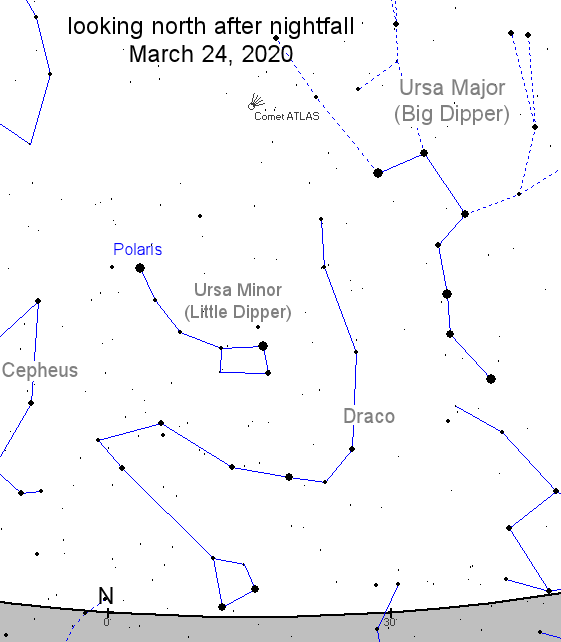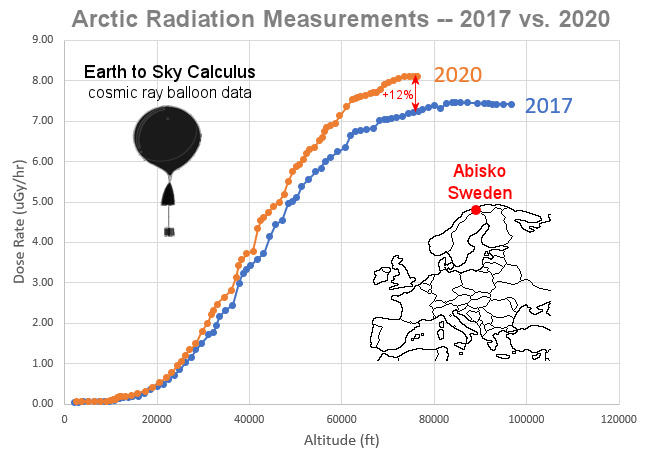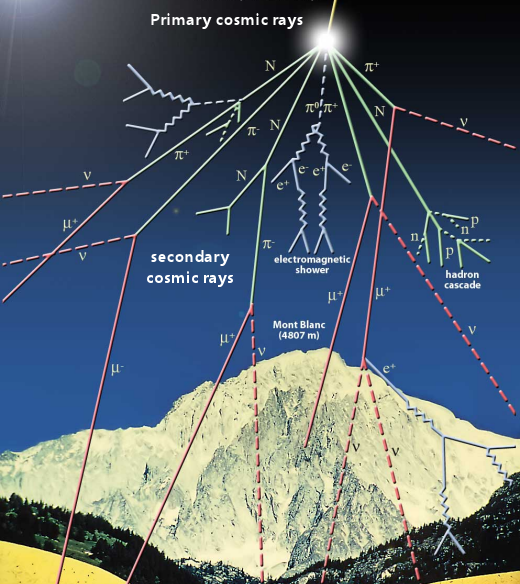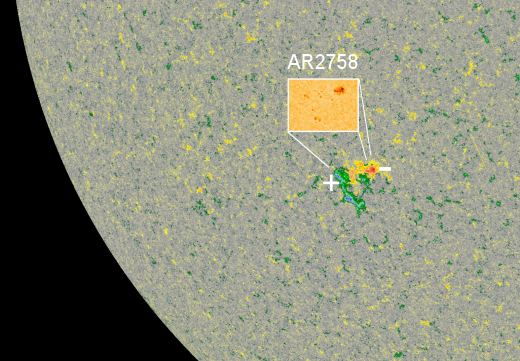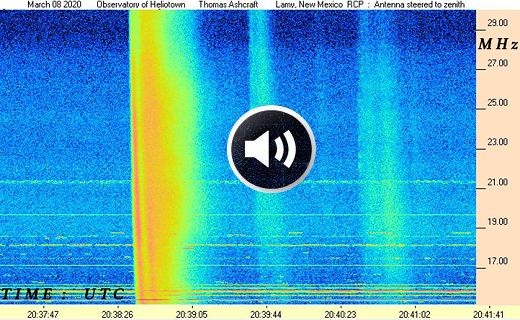March 26, 2020: You don’t see this everyday–or even in 30 years. “Noctilucent clouds have appeared over the South Pacific,” reports meteorologist Ashleigh Wilson of the Australian Antarctic Division. “I photographed them from Macquarie Island on Jan. 4th.”
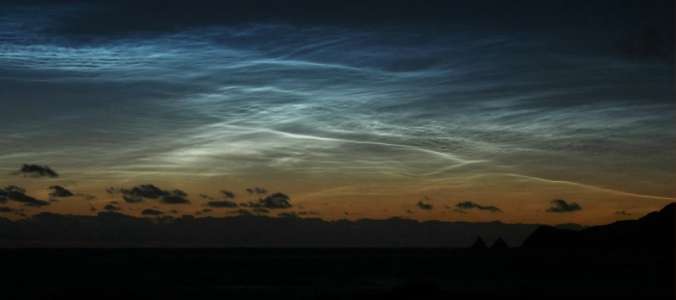
Noctilucent clouds over Macquarie Island on Jan. 4, 2020. Photo credit: Ashleigh Wilson of the Macquarie Island Bureau of Meteorology team, Australian Antarctic Division. [more]
“According to John French of the Australian Antarctic Division Atmospheric Science Program, the only other photographic recording of NLCs on Macquarie Island was in the mid-1990s,” Wilson says.
NLCs are Earth’s highest clouds. Seeded by meteoroids, they float at the edge of space more than 80 km above the planet’s surface. NLCs form when summertime wisps of water vapor rise up to the edge of space and crystalize around specks of ‘meteor smoke.’ Prime time for sightings is June-July in the north, December-January in the south.

“It was a breathtaking moment when I first realized what I was seeing,” recalls Wilson. “I had just finished my shift in the Met office at 11:30 pm and I was walking back to our dorms. Luminous filaments were crisscrossing the sky, blue in color with some wave formations. I spent two hours down by the ocean with a camera and tripod, adjusting ISO and lenses, trying to capture the extraordinary event. The clouds were so bright, I could see their reflection in the water.”
Wilson’s sighting caps a remarkable year for noctilucent clouds. Once confined to Earth’s polar regions, NLCs have recently spread to lower and lower latitudes. In 2019, the clouds appeared over Rome, Italy; Las Vegas, Nevada; Albuquerque, New Mexico; Paris, France; and outside Los Angeles, California. Many of the sightings smashed old records for low-latitude visibility.

The recent spread of noctilucent clouds. The shaded area shows the traditional domain of NLCs. Black circles denote sightings during the northern summers of 2003-2011. Red circles are for June 2019. All data come from Spaceweather.com. The map originally appeared in JGR Atmospheres: article.
In the southern hemisphere, reports of *any* noctilucent clouds are quite rare–in part because there are fewer people on that side of the world; in part because southern NLCs are usually weaker than their northern counterparts. Nevertheless, NLCs were sighted over New Zealand in Dec. 2019 and Macquarie Island in Jan. 2020.
Why are NLCs so revved up? No one knows for sure. It could be a result of climate change and/or the solar cycle. Satellites have recently detected extra moisture in the mesosphere–a key ingredient of NLCs. That moisture may be surviving thanks to low solar activity. Right now a deep Solar Minimum is underway. Ultraviolet radiation that would normally destroy water in the mesosphere is at low ebb.
Get ready for more. The northern hemisphere season for NLCs is about to begin as summertime wisps of water vapor drift up toward the edge of space. The first electric-blue filaments are typically sighted in mid- to late-May. If recent events are any guide, 2020 could be very special indeed.
Stay tuned!

